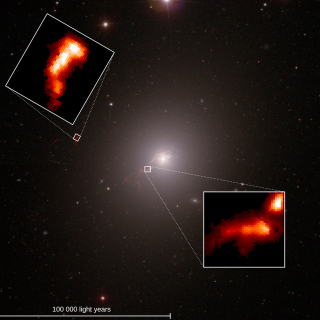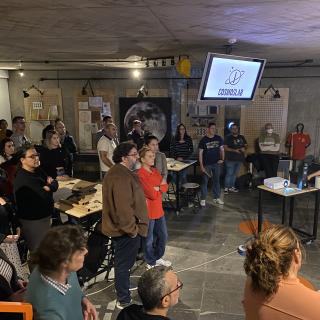Giuseppe Bono, astrophysicist and associate professor of the Department of Physics at the Università degli Studi di Roma "Tor Vergata" (Italy), is a long-standing collaborator of the Instituto de Astrofísica de Canarias (IAC), either as visiting researcher or teacher in the Winter School that this centre organises in collaboration with the University of La laguna (ULL). In this edition, he will dedicate his talks to near-infrared high resolution spectroscopy of variable stars. That seems a difficult subjetc, but he assures that the accurate scattering of changing light emitted in that wavelenght by these objetcs allow to know the composition of these pulsating stars and the phenomena taking place inside them.
The field of variable stars is going to have a quantum jump in a few months, thanks to the geometrical distances that will be released by GAIA satellite”
“High resolution spectroscopy allow us to provide accurate estimates of intrinsic parameters of stars and their abundances of chemical elements”
“It is very useful for the students to be exposed to specific astrophysical problems. In a week they can become familiar with the current status-of-the-art, and in particular, the dirty tricks adopted to attack them”
1. What is the peculiarity of variable stars?
The reason why we are interested in variable stars is because they are good distance indicators and good stellar tracers. This means that once we identify a variable star we can estimate its distance and, in several cases its age. These are key advantages when compared with typical static stars. This is a field that is going to have a quantum jump in a few months, thanks to the geometrical distances that will be released by GAIA satellite of the European Space Agency (ESA) for many of these distance indicators.
2. Why is it used high resolution spectroscopy?
We are interested in high resolution spectroscopy, since these observations allow us to provide accurate estimates of intrinsic parameters (effective temperature, surface gravity, turbulence) and the abundances of iron-peak elements, alpha-elements and neutron capture elements. This means a significant fraction of the Periodic Table. These abundances are crucial to constrain the chemical enrichment of the Milky Way and of nearby stellar systems. Let me note that several of these elements are the ingredients of proteins, and in turn of organic life.
3. And Why is high resolution spectroscopy combined with near-infrared (NIR) observations?
We have a limited knowledge of several galactic regions, because they are highly reddened such as the galactic center, plane and Bulge. This means that the dust and the gas is so thick that the photons emitted by the stars that are located there do not reach us. A clever observing strategy to overcome some of these problems is to use NIR wavelengths. The physical reason for this is simple: these wavelength are ten times less affected by the reddening when compared with optical bands and that is why I am going to talk about pros and cons of NIR high resolution spectroscopy when compared with the optical regime.
4. You’ve been teacher of another Winter School some years ago . What is your opinion about this school?
Yes, indeed. I was invited in the Winter school organized by IAC Prof. Jordi Cepa on large astronomical data sets. My opinion about it is very positive for two different reasons. Firstly, it is very useful for the students to be exposed to specific astrophysical problems. In a week they can become familiar with the current status-of-the-art, and in particular, the dirty tricks adopted to attack them. And secondly, these Schools are also very useful for the scholars, since together with lectures they have also to write a sort of review article on the topic.



